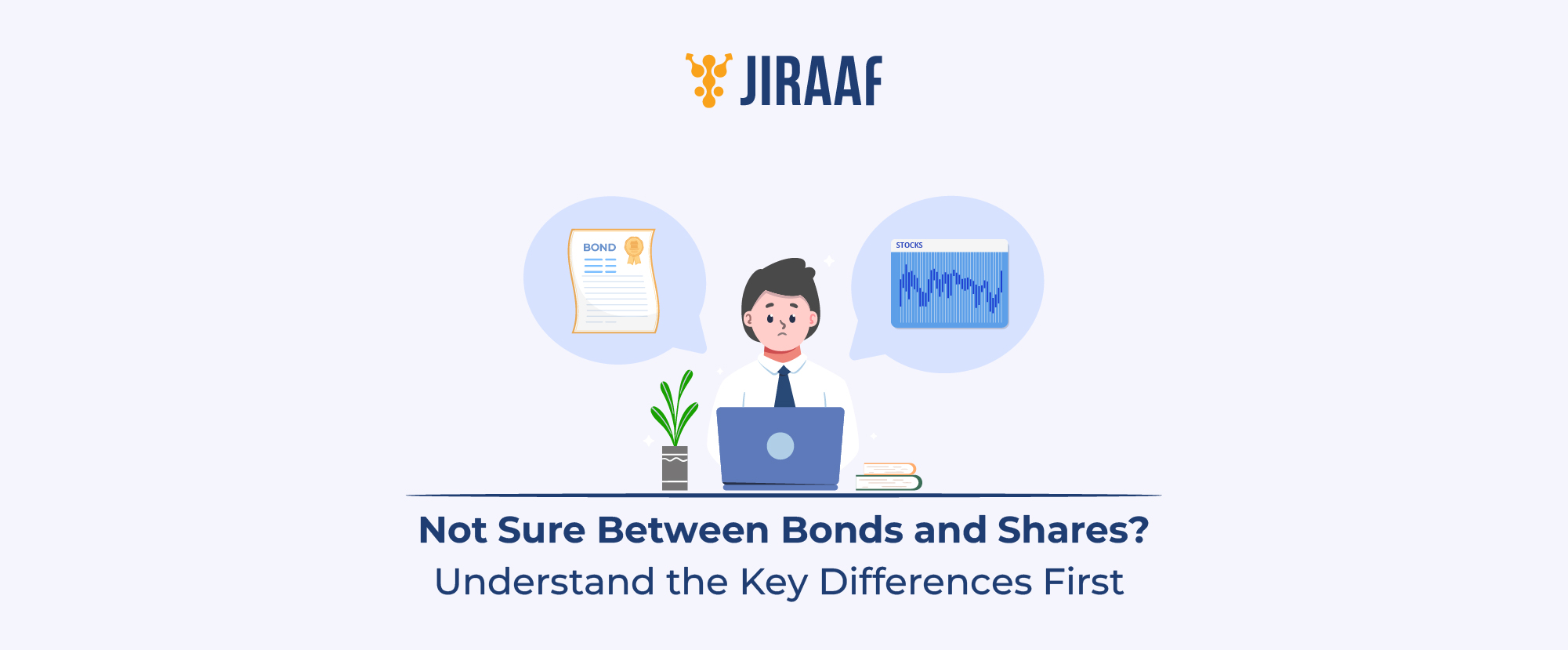In today’s fast-paced financial world, building trust and ensuring stability often decide the success of any venture. Whether you are a business owner, contractor, or investor, knowing about tools that safeguard your interests can help you make smarter financial decisions and work with greater confidence.
A surety bond is one such tool. It acts as a financial guarantee, making sure that obligations are fulfilled and protecting all parties involved. In India, they are increasingly being used in sectors like construction, infrastructure, and trade to bring more security to partnerships.
Want to know how they work and why they are gaining ground in India? Let’s dive in.
What is a Surety Bond?
A surety bond is a financial tool that ensures contractual obligations will be fulfilled. It gives one party—typically the project owner—assurance that the principal will carry out their obligations. The bond helps to lower operational and financial risks by providing compensation in the event that the principal does not comply.
Surety bonds are extensively utilized in a variety of sectors, including government projects, supply contracts, infrastructure, and construction. They serve as a safety net, guarding bondholders against setbacks, defaults, or delays that may otherwise compromise a venture’s viability. By guaranteeing accountability, they improve mutual trust and enable initiatives to proceed with assurance.
Imagine it this way. A surety bond guarantees that the construction will be finished as agreed upon if a contractor agrees to build a highway for the government. The project owner is not placed in a difficult situation if the contractor defaults. The project can go uninterrupted because the bond offers financial coverage.
Surety bonds go beyond paperwork and foster confidence by outlining precise duties and providing financial support. By demonstrating dependability, they give businesses access to more expansive options. They guarantee that promises are kept and help project owners feel less uneasy.
Key Elements of a Surety Bond
Now that we know what a surety bond means and how it works in principle, it’s time to break down its essential elements. Every surety bond rests on three key parties, each with a distinct responsibility that makes the agreement function smoothly.
- Principal
The principal is the party who undertakes the obligation to complete a project or deliver a service. This could be a contractor, business, or service provider. For example, in a highway construction project, the contractor who commits to finishing the work is the principal.
- Obligee
The obligee is the beneficiary of the bond—the party that requires assurance that the project or obligation will be completed as promised. Continuing with the highway example, the government authority commissioning the project would be the obligee, relying on the bond for protection against non-performance.
- Surety
The surety is usually an insurance company licensed by IRDAI that issues the bond. Its role is to provide the financial guarantee that if the principal defaults, the obligee will be compensated, or the project will be completed. In our example, if the contractor fails to deliver, the surety ensures the government authority does not bear the financial loss.
Together, these three roles form the backbone of every surety bond. The principal makes the promise, the obligee receives the assurance, and the surety provides the financial backing that turns the promise into a reliable safeguard.
Now that we understand the three pillars of a surety bond, the next question is: how is it put together on paper? Like any legal or financial document, a surety bond follows a structured format with essential clauses that define rights, obligations, and remedies. Let’s take a closer look at the bond format and the key components that make it enforceable.
Surety Bond Format: Essential Clauses and Structure
A surety bond may look like just another contract, but what makes it powerful are the clauses it contains. These define the responsibilities of each party and the remedies if obligations aren’t met. While the exact surety bond format varies depending on the type (performance, bid, or payment bond), most follow a standard structure.
1. Title and Parties Involved: The bond starts with a title and details of the principal, obligee, and surety, establishing who is bound by the agreement.
2. Recitals or Preamble: Provides the background and purpose of the bond, explaining why it is issued and what it secures.
3. Bond Amount (Penal Sum): Specifies the financial limit of the surety’s liability, i.e., the maximum amount payable in case of default.
4. Conditions and Obligations: Outlines the duties of the principal, the rights of the obligee, and when the surety must step in.
5. Term and Duration: States how long the bond remains valid and when obligations expire.
6. Remedies in Case of Default: Explains whether the surety will pay damages, complete the work, or compensate the obligee.
7. Governing Law and Jurisdiction: Mentions the legal framework under which the bond is enforceable.
8. Signatures and Seal: Signed by all parties and often notarized or sealed for legal validity.
So, surety bond format is not just paperwork but the framework that ensures accountability and protects all parties involved.
Now that we understand the structure, the next big question is—where are surety bonds being used, and why are they gaining momentum in India?
Use of Surety Bonds in India
In recent years, surety bonds in India have emerged as a practical alternative to traditional bank guarantees. With massive infrastructure and development projects underway, contractors and project owners are seeking smarter financial tools to balance risk and liquidity.
Unlike bank guarantees that often demand heavy collateral, a surety bond offers the same security without tying up large sums of working capital. This shift not only reduces financial strain on contractors but also improves project efficiency.
The Insurance Regulatory and Development Authority of India (IRDAI) issued the Surety Insurance Contracts Guidelines in January 2022, which became effective on April 1, 2022. This framework allowed licensed general insurers to begin issuing surety bonds. Since then, several insurers, including Bajaj Allianz General Insurance, New India Assurance, and SBI General, have launched surety bond products, primarily used in highways, power projects, and government contracts, especially where timely delivery and risk management are critical.
Further regulatory relaxations were introduced in 2023 and 2024, such as removal of premium caps and exposure limits on contracts, and expansion of surety bond applicability beyond infrastructure projects to commercial contracts, facilitating broader use in the Indian market.
As India’s infrastructure push grows, surety bonds are poised to play a central role by mitigating risks, ensuring accountability, and freeing up liquidity. For businesses, they represent not just a guarantee, but a strategic financial tool aligned with the country’s growth momentum.
As it’s gaining its reputation of being an alternative to bank guarantee, we should compare and check why and how it stands apart.
Surety Bonds vs Bank Guarantees
When it comes to securing obligations, businesses often weigh between surety bonds and bank guarantees. While both provide protection to the obligee, they differ significantly in cost, flexibility, and impact on liquidity.
| Feature | Surety Bonds | Bank Guarantees |
| Definition | A three-party agreement (principal, obligee, surety) where the surety ensures the obligee is compensated if the principal defaults, later recovering the amount from the principal. | A two-party agreement where the bank directly guarantees payment to the obligee if the applicant fails to perform. |
| Cost | Lower premiums, usually 1–5% of bond value, depending on risk profile. | Higher fees, 2–10% of guarantee value, plus processing costs. |
| Collateral | Minimal or no collateral; depends on creditworthiness. | Requires significant collateral (cash, FDs, property), locking up capital. |
| Impact on Credit | Preserves credit lines, maintaining liquidity. | Reduces credit limits, restricting financial flexibility. |
| Processing Speed | Faster, as underwriting focuses on credit history and project details. | Slower due to stricter collateral verification and banking processes. |
| Issuer | Licensed insurers under IRDAI in India (e.g., Bajaj Allianz, New India Assurance). | Banks and financial institutions under banking regulations. |
| Risk Bearing | Surety pays obligee but recovers from principal, ensuring accountability. | Bank pays obligee and absorbs risk, secured by applicant’s collateral. |
| Suitability | Best for contractors, SMEs, and government project bidders needing flexibility. | Better for large corporations with strong banking ties and collateral. |
Who Needs a Surety Bond and When?
In India, a surety bond becomes essential when projects involve high stakes, long timelines, and multiple stakeholders. These instruments are designed to safeguard trust and ensure accountability, especially where the risk of default can derail investments or public interest.
Situations where surety bonds in India are most relevant:
- Government and infrastructure projects: Public procurement, roadways, metro rail, and renewable energy projects often require surety bonds to guarantee that contractors deliver as promised.
- Real estate development: In large housing projects, a surety bond assures homebuyers and regulators that even if a developer fails, the project will either be completed or compensation provided.
- Capital-heavy ventures: Whenever India undertakes high-risk, large-scale projects, surety bonds act as a safeguard, ensuring funds are protected and execution stays on track.
- Private contracts and supply chains: Companies entering large supply or service contracts can use surety bonds to mitigate counterparty risk.
Surety bonds in India are most needed when financial security, timely delivery, and trust are non-negotiable.









